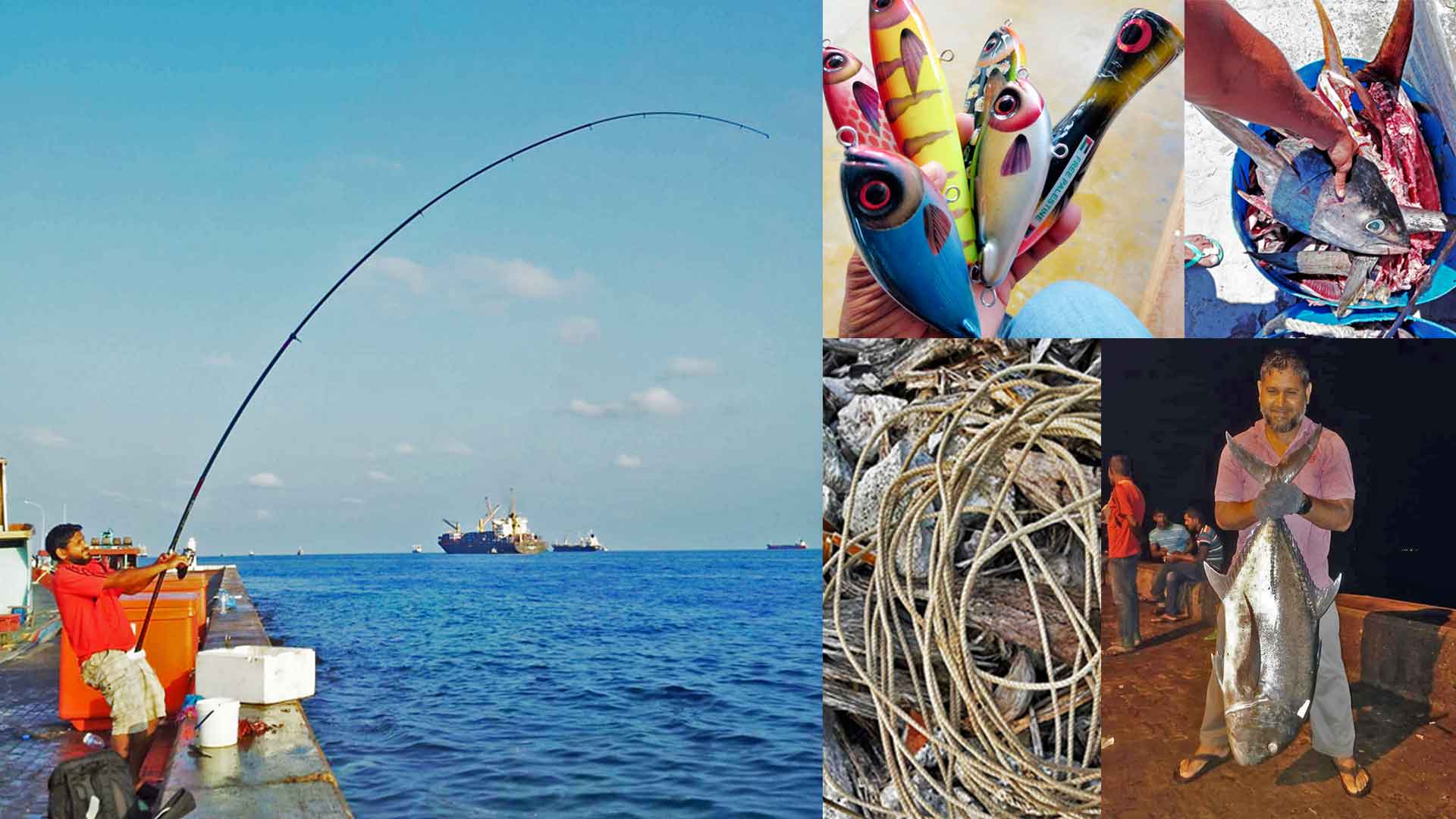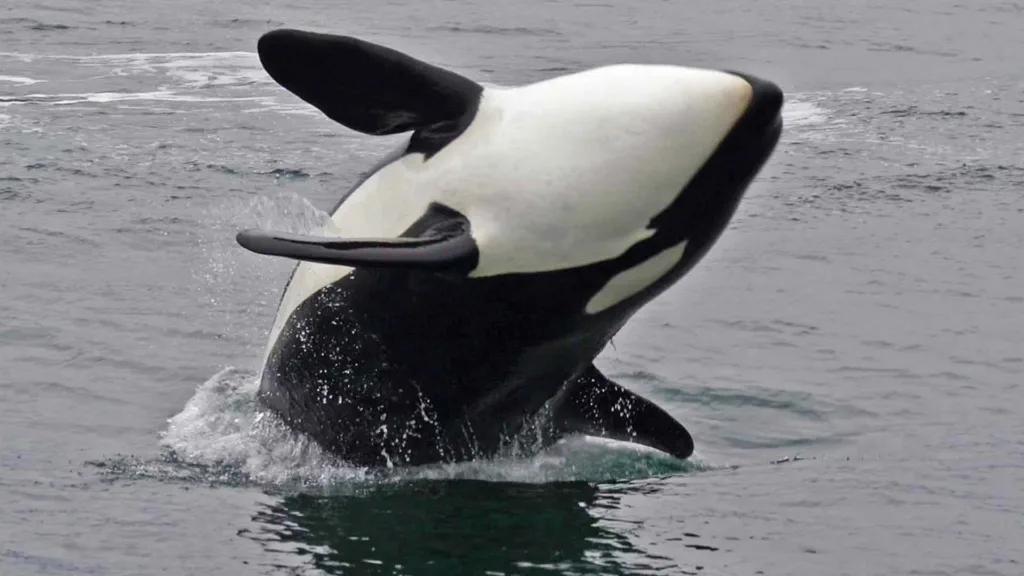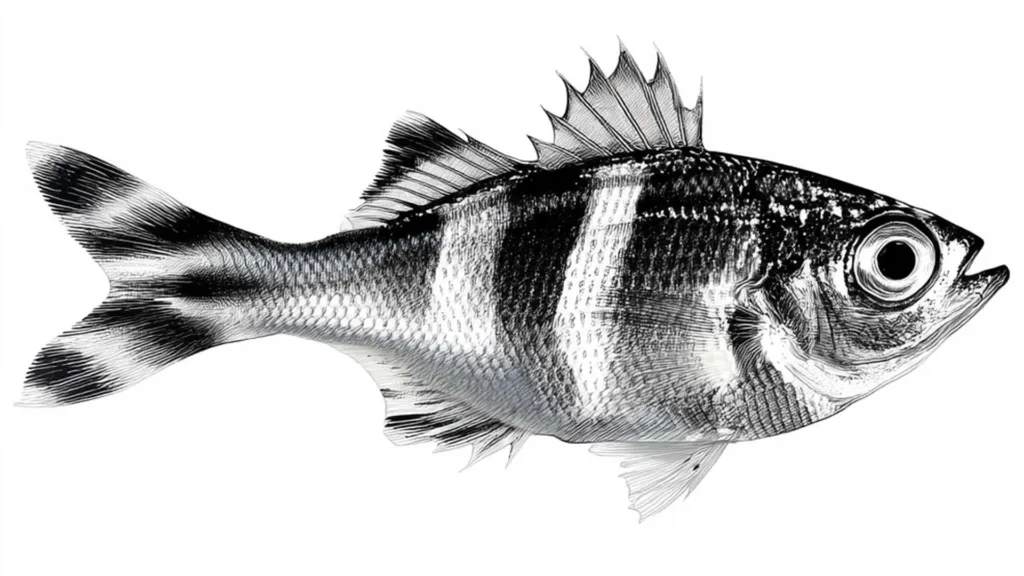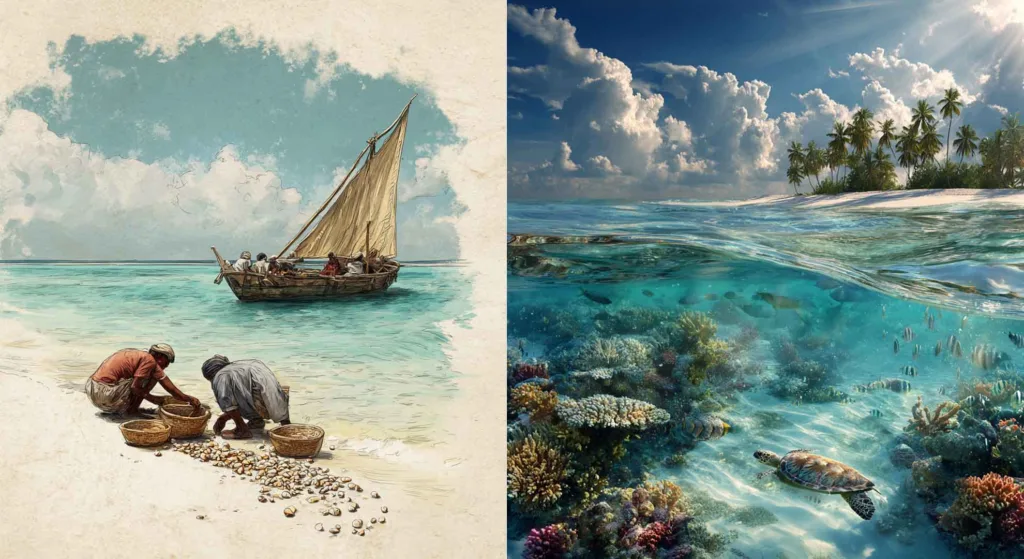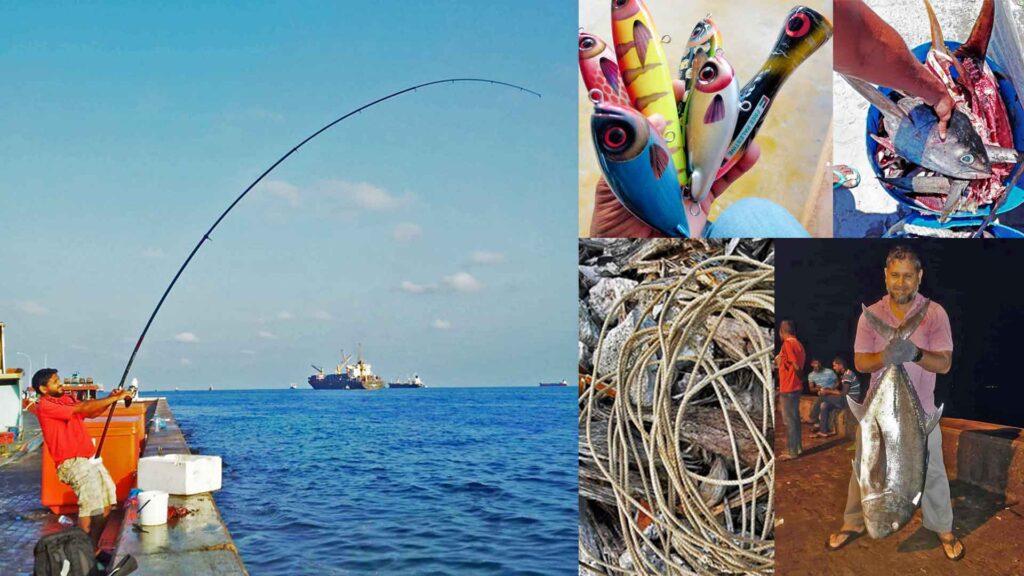
To catch this powerful predator, we use 200 to 500lb monofilament with big hooks. During sunset, we go to the beach with our late uncle Rafeeqbe. He would use tuna head (mahi bol) or head part of a dead eel (about 8 inches in length) as bait. After attaching the bait to the hook, the monofilament (kanvaaro) is released into the nere, passage ways made to travel through the house reef. We also attach stainless steel wire to the hook and the monofilament.The bait is placed around 50ft away from the shore.
Normally the bait is placed on the passage with the help of a beach stone weighing around 1kg. This would not move the bait or it prevents entangling of the bait inside the reef or corals in the passage way. We connect one end of a thin nylon thread which is around 3ft in length, to the edge (anchor) of the barb on the hook and the other end of the line is attached to the beach stone. The rear end of the monofilament or the main fishing line is connected to a thin rope – we call it nanu. Then we fasten the rope to a coconut tree and then we will sit on the beach, around our uncle. He would hold the fishing line. The fishing line is loosely held and can be seen as a ‘curved’ line.
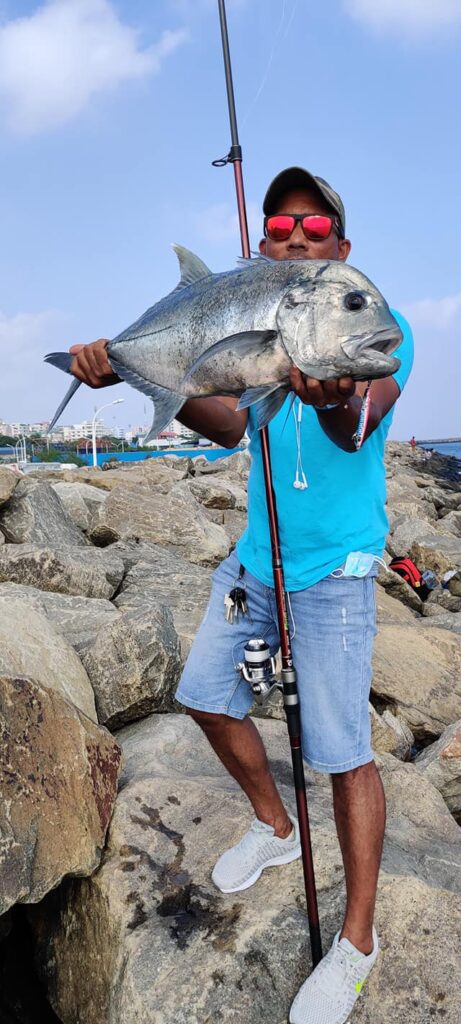
There will be ‘warning signs’ on the line. We call it ‘kottaafi.’ This small charge, according to my uncle, was predators’ bites or hits on the bait. And then we have to be prepared to the full-scale attack on the bait. Normally 3 or 4 youths will always be with my uncle. The scale of the assault on the bait is so powerful that it’s a killing fight about to happen to subdue the beast. The assault sends a ‘shuddering wave’ through the fishing line that will be felt on my uncle. And we also wanted to have a sensation of this and he would give us the line to hold.
When the predator is hooked up, the fishing line is like an ‘iron rod.’ It would be very hard to hold the line and the rope. The beast will drag all of us down the beach. We could hardly pull in two or three feet, even within a five-minute period. This battle continues until we conquer. Nonetheless, if we succeed, then the reward is a big catch weighting 20 to 40 kg. This is how we catch giant trevally from shore. Still, we use this method to catch GT. We can use the same technique in open sea, too. But 100 to 200lb monofilament line will be enough to land these beasts.
Bait
In Maldives, octopus (boava), big-eye scad (mushimas), fusilier (garahitha muguran), round scad fish (rihmas), eels (ven) and flying fish (fulhangi) are popular baits to use from shore to land giant trevally. When schools of Big-eye scad enters lagoons, people use handlines (monofilaments) to land giant trevally by using some of these fish as baits, especially using big-eye scad. Therefore, these baits can be used for GT fishing from the shore, lagoons, and even in the open sea. We also use gut of fish to land GTs from shore and from open sea.
Where are they found?
They are majestic predators residing in exotic locations. Maldives is renown for crystal clear waters – a symbol of an uncontaminated ecosystem. This is a vital factor for them to move around chasing schools of bait fish. GT can be found in shallow flats, lagoons, deeper reefs and remote atolls. They love the water disturbances and move around wave break areas. They can be located in marine sea grass areas. GTs are also found in deeper water offshore as well.
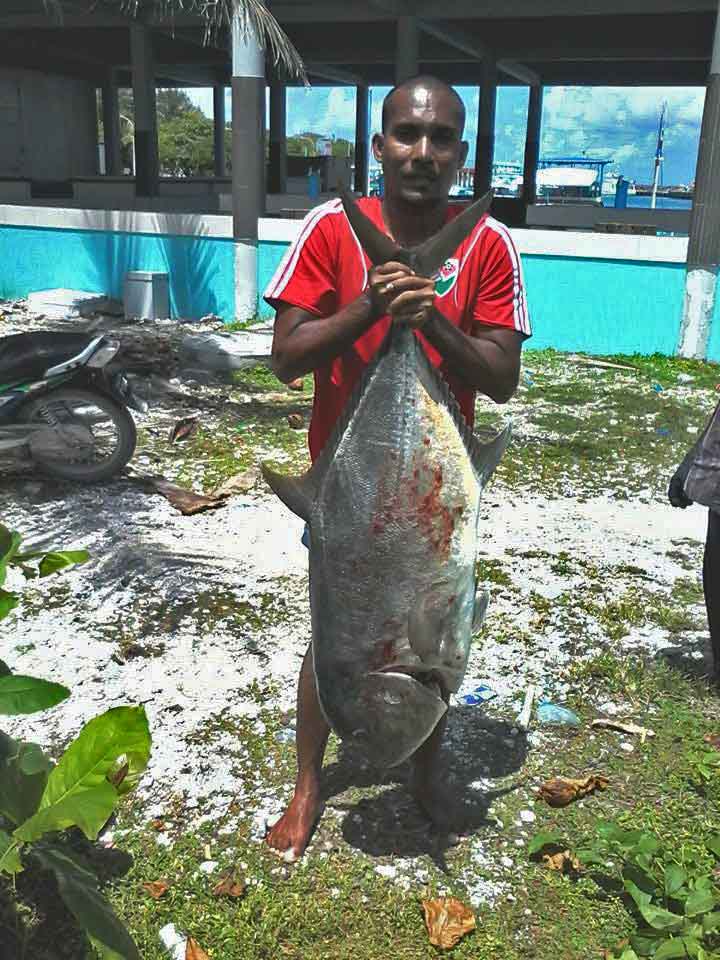
Try to find fusilier (garahitha muguran) or baitfish schools. According to experienced fishermen, the GTs have craving for these baitfish. Fusiliers are found in the reef. They move in schools. With the tide, they move around the reefs. When the current is strong and during mid-tide they come to the surface. This creates a disturbance or commotion in the water. It also forms white water, sometimes in patches. Normally the schools of bait fish can be seen on the side of the reef.
GTs can also be seen near large reef edges and drop-offs. They follow fish. Particularly they move along the edge. During high tide, they ascend from the deep and can be seen moving on the reef. Sometimes they come near the shore, where the water level is very low. We have seen them coming towards the shore where their dorsal fins are above the water level. And leaning to one side, swimming tilted to turn away to head towards the fore reef.
GTs hunt normally in the early morning hours. But they are also very active in the afternoon, especially during sunset. Before the peak of high tide, these fierce predators can be seen roaming around reef flats. They are specialists in feeding in high current areas. You can pop at these spots during mid-tide. GTs can also be found cruising the flats (inner reef) or blue holes (underwater karst caves) of reefs. You can notice large dark patches moving across the flat. According to our fishermen, the most suitable condition is strong tide at reef point, provided that active bait fish is present. Try to locate isolated bommies. These are isolated coral outcrops. Bait fish such as fusiliers may be present in these spots as well. Try to cast at the side of the reef where the current is coming.
I have included separate articles for different techniques used for GT fishing. That include: Popping and jigging.
